Everyone desires sleek hair. That’s why beauty purists turn to chemical treatment, flat irons, and hair dryers to smoothen hair.
Unfortunately, these methods use heat which might damage hair. Heat can mess up your hair proteins and cause the cuticle to release moisture.
Severely burnt hair might make you think about cutting your adorable hair. But before you turn to desperate measures, you should try workable solutions first.
How to Identify Heat-Damaged Hair?
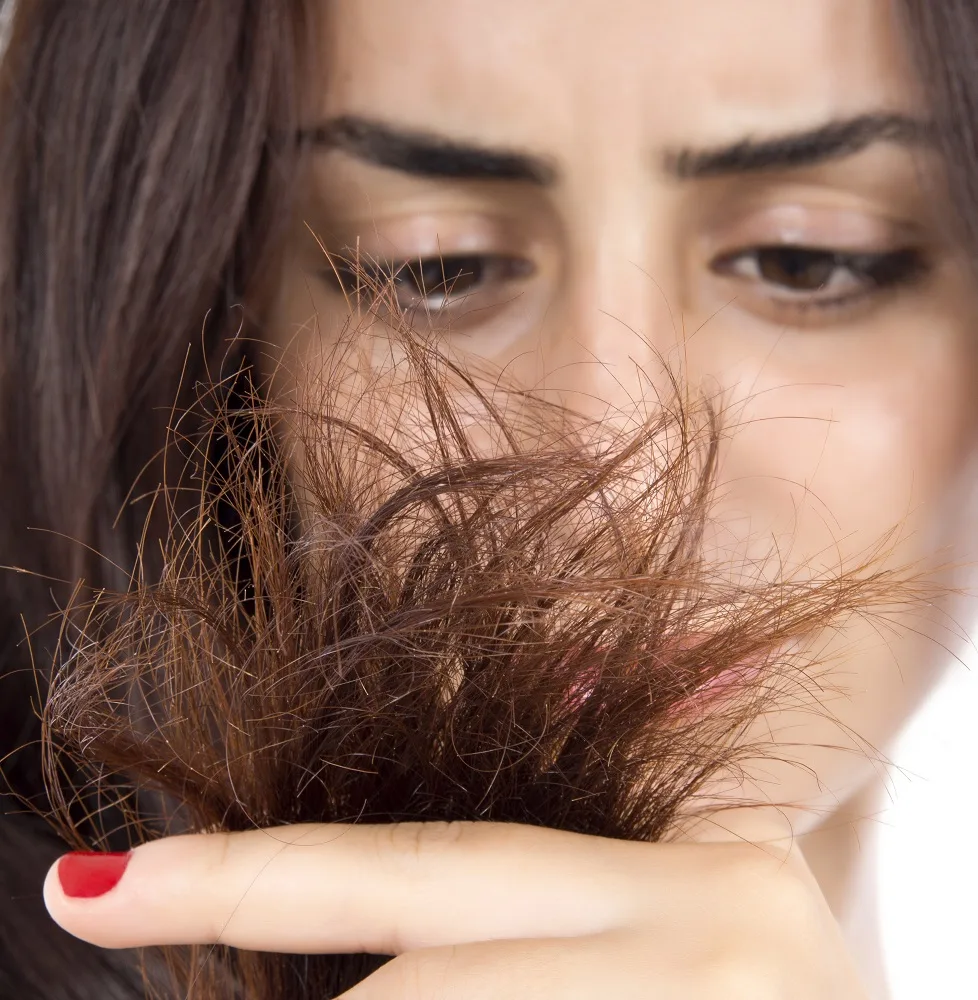
Before seeking solutions, you must first confirm you have fried hair. Several factors can cause your hair to burn. It could be the chemicals you use to straighten your hair or heating tools like curling irons.
Heat-damaged hair will display several signs. Apart from the smell, you might notice:
- Stringy hair texture
- Split hair ends
- Hair might easily break
- Dehydrated hair
- Harder to manage hair
- Hair tangles easily
How to Repair Fried Hair Without Cutting It?
If your hair displays the above signs, chances are it has burnt. However, you don’t need to panic. There are several ways you can fix burnt hair and avoid cutting the damaged hair.
1. Use Hot Oil Treatment
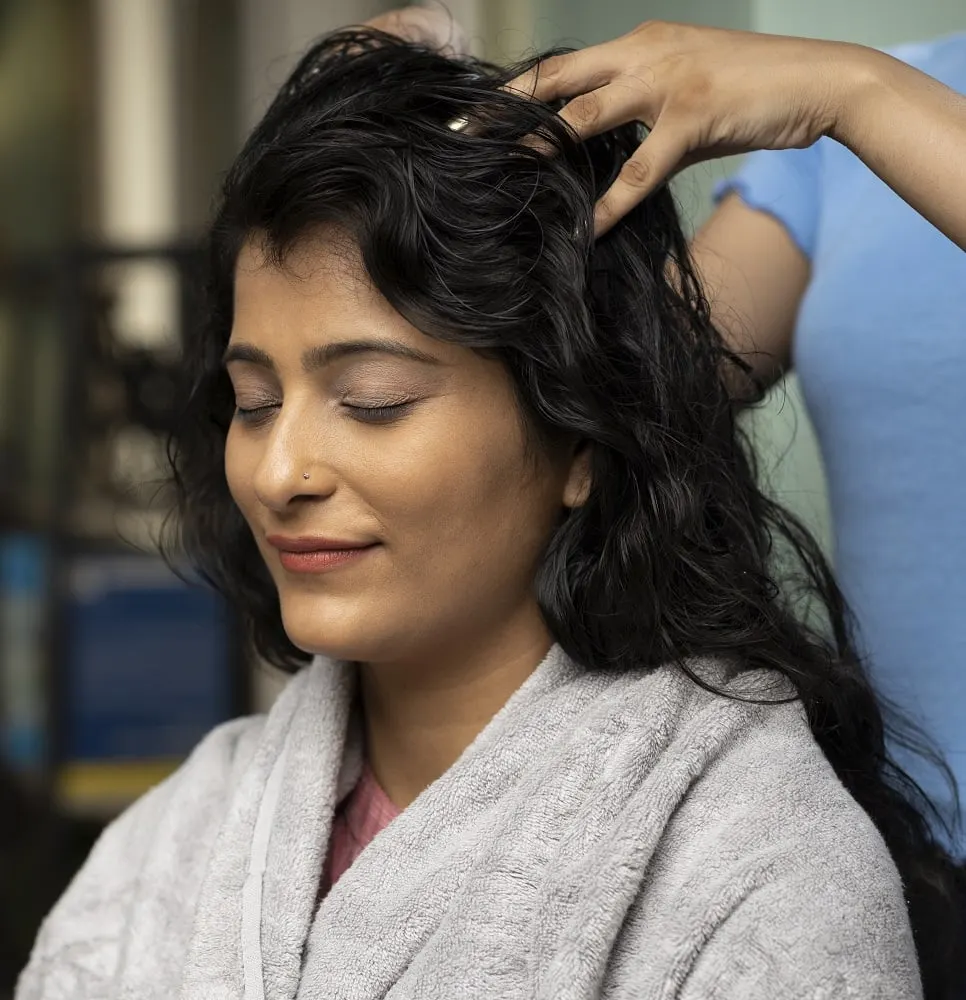
When it comes to nourishing brittle hair, nothing beats hot oil. These oils reinforce the hair cuticle.
The super nourishing ability of coconut oil makes it the best hot oil treatment for damaged hair. According to many studies, coconut oil also prevents protein loss from the hair shaft. This prevents further damage to your burnt hair.
Other plant-based oil that you can use include:
You can get hot oil treatment in a salon, buy ready-made oil products, or make your hot oil at home. If you choose the latter, remember to heat the oil to a moderate temperature.
After heating the oil, apply it from the hair root towards the hair end. Afterward, cover your hair with a shower cap for about an hour, then wash off the oil. Repeat this process at least once a month to fix your burnt hair.
Do not use hot oil treatment if you have skin issues like psoriasis. It’s best if you seek advice from your doctor before applying hot oil to your scalp.
2. Invest in Quality Deep Conditioners
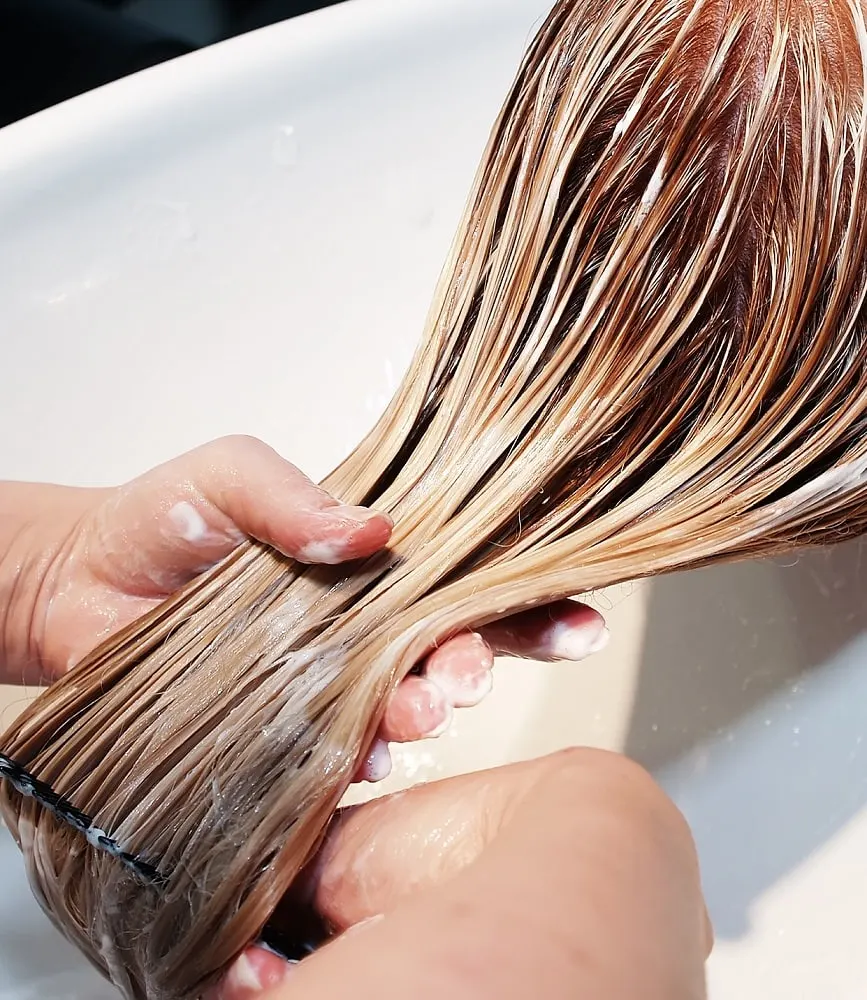
Deep conditioners can repair hair damaged by chemical treatment. For the best results, you should apply them at least once every week.
Remember to pick conditioners that contain natural ingredients. You can also make conditioners at home. One of the most common homemade conditioners is the mayonnaise hair mask.
This mask contains mayonnaise, vinegar, eggs, and oils. These ingredients create a combo that will repair, nourish, and strengthen your hair.
Applying a mayonnaise mask is pretty straightforward. Ensure you coat every section of your burnt hair and then wear a plastic cap over your head.
The mask needs to stay on your hair for at least an hour. After this period, remove the mask and wash your hair with a mild shampoo.
You can also apply natural conditioners like aloe vera or honey, which are known for their soothing and moisturizing properties.
Apply these to your hair as a mask and leave them on for a period before washing them out.
3. Use Salon-Grade Cleansers and Shampoos to Clean Hair
If your hair burns due to chemicals, you’ll need to thoroughly wash it with high-quality shampoo.
Stay away from aggressive shampoos that contain propylene glycol, ammonium, sulfates, sodium, and other harsh compounds. These ingredients will further dehydrate your burnt hair and worsen the situation.
A good option is to use cleansers made from natural sources. The ingredients in such shampoos are mild and gentle on your scalp and hair. Another great alternative is using cleansers that contain glycerin and panthenol.
As a humectant, glycerin will help moisturize your dry and damaged hair. On the other hand, panthenol acts as a moisturizer, an emollient, and adds volume to the cuticle.
4. Apply Keratin
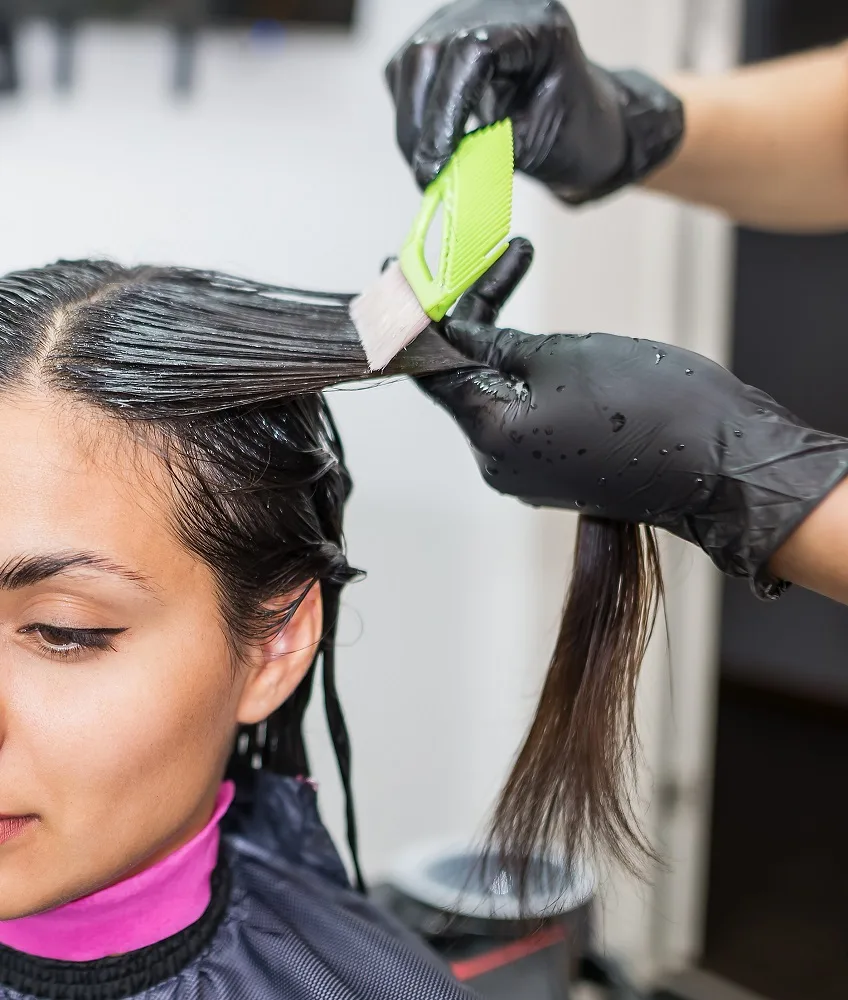
When mastering how to fix burnt hair, you must know the role of keratin in hair growth.
Keratin is an important protein that provides exterior protection to the hair cuticle. This protein plays a significant role in the structure, flexibility, and overall health of hair. Unfortunately, keratin gets depleted when your hair burns.
You have to use keratin shampoos, conditioners, serums, and creams to replenish keratin in your hair. Products that contain this protein have keratin hydrolysates as one of the ingredients.
Besides repairing your fried hair, keratin products will make your hair more damage-resistant.
5. Avoid Sun Damage
When you have burnt hair, you should avoid anything that may worsen the condition. Regrettably, some people ignore the effects of the sun on their hair. Although the sun doesn’t burn your hair, it causes significant damage.
Prolonged exposure to the sun’s harmful rays, UVA and UVB, weakens the hair’s cuticle. Some signs of hair damage due to the sun include:
- Dryness
- Split ends
- Frizziness
- Thinning
- Color fading
The sun’s rays might cause sunburn if they fall on your scalp. It’s advisable to apply a serum that blocks harmful UV rays. You can also cover your head or avoid venturing out during sweltering days.
6. Henna Treatment
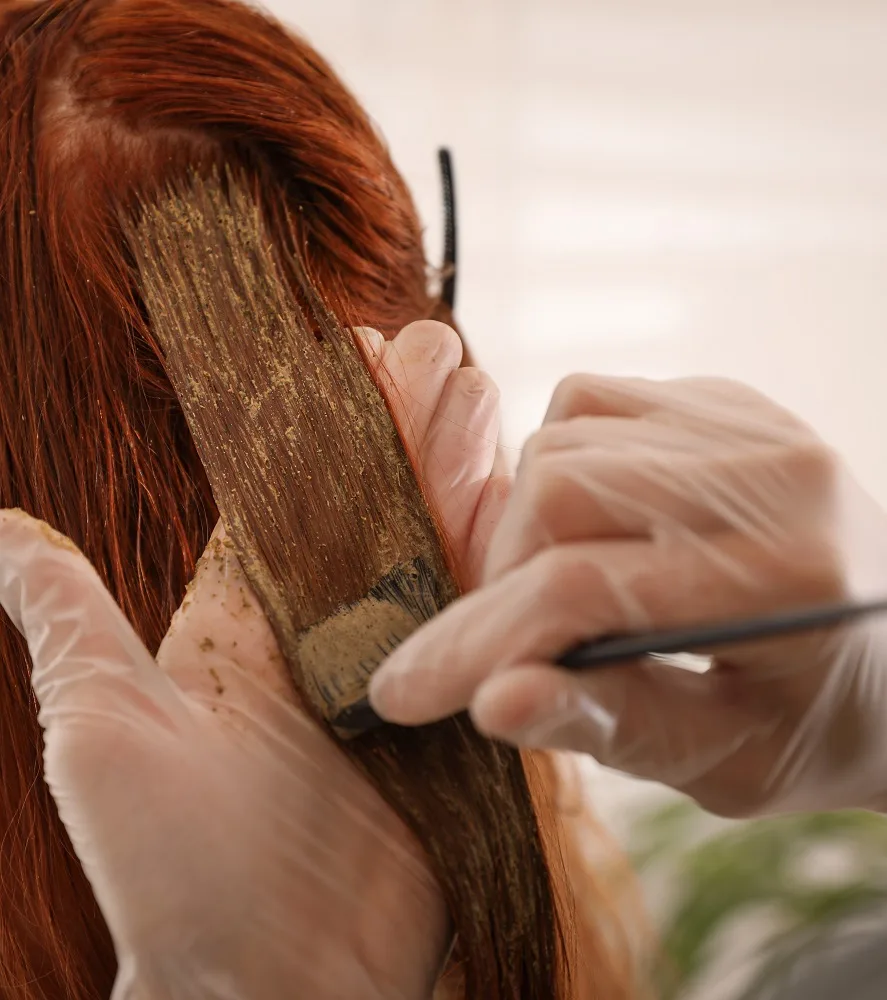
Most people think that henna is only for covering greys and restoring youthful hair. But this magical herb can do a lot for your hair.
It might be the ultimate fix for your burnt hair. Henna can reverse damages caused by chemical and heat treatments. It does so by:
- Repairing damaged hair cuticles
- Deeply conditioning hair
- Nourishing hair roots and preventing breakage
- Maintaining the pH balance of the scalp and hair
As a natural ingredient, you can mix henna with water and apply it directly to your burnt hair. With that said, henna is more effective if you combine it with other natural ingredients.
You can create a potent mixture of henna powder, eggs, plain yogurt, lemon, and black tea. Apply this concoction to your hair and let it sit for 4 hours. Wash off, and you’ll find softer, shinier hair.
How to Prevent Hair Damage from Chemical Treatment
Prevention is the best way of dealing with heat-damaged hair.
Before using hair chemicals, read all the directions and warnings. Pay vital attention to how long the chemical treatment stays on your hair.
It’s best if you set a timer to guide you. Chemicals will burn your hair if they overstay on your head.
Before opting for chemical treatment, you might need to nourish your hair first. Use oils and conditioners to help your hair grow.
If a chemical is too harsh on your hair or scalp, you should cease using it.
How to Prevent Hair Burn from Hot Styling Tools
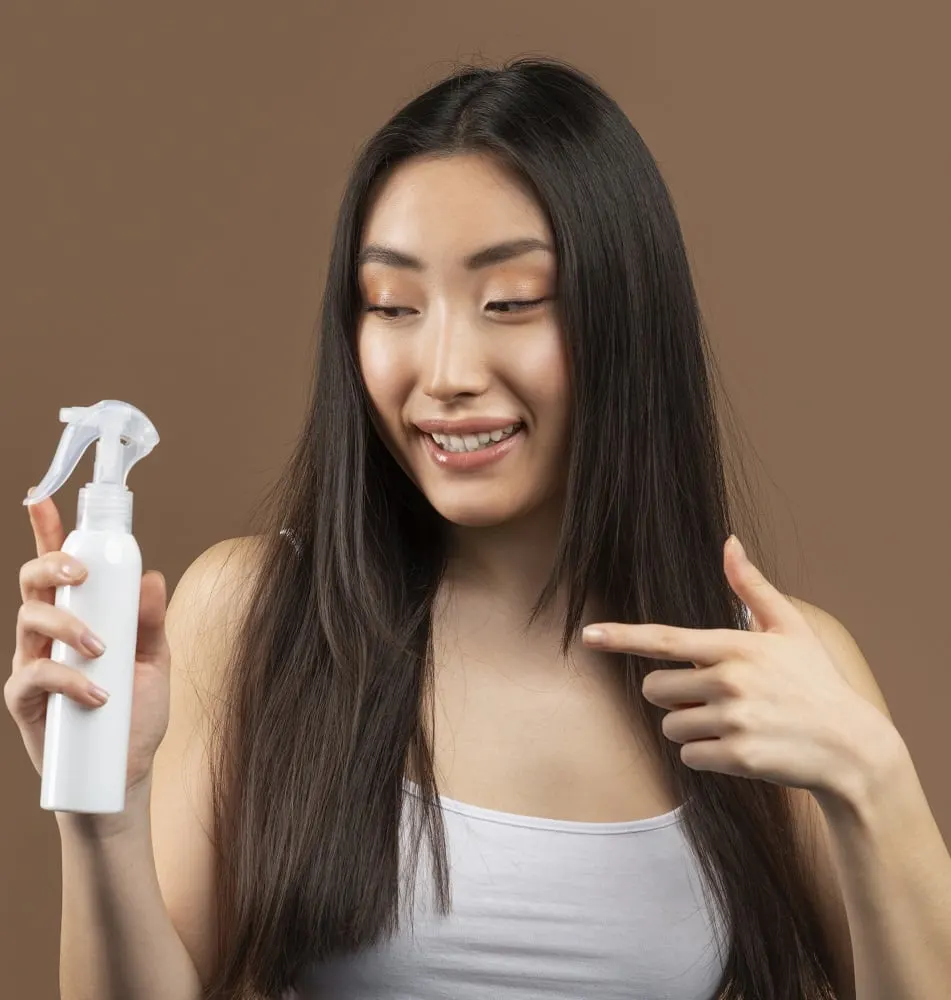
Always exercise caution when using hot styling tools like curling irons and flat irons. One wrong move and these tools will burn your hair. Here are some things to consider when using such tools.
To prevent hair damage from hot styling tools, it’s important to adopt a comprehensive hair care routine. Here are some detailed tips to help you minimize the risk of damage:
Use Minimum Heat
Not all hair types require the same amount of heat. Fine or damaged hair should be styled at lower temperatures, while thicker, coarser hair can withstand higher settings.
Most styling tools come with adjustable temperature settings, so choose the lowest setting that’s effective for your hair type.
Your hair only needs a minimum amount of heat to straighten. For fine hair, you should use temperatures that are below 140 degrees Celsius. For thick hair, use temperatures that are about 200 degrees Celsius.
Use ceramic or tourmaline straighteners as these materials distribute heat more evenly, reducing the risk of hot spots that can burn your hair.
Don’t let the heat source stay too long on one section of hair. Keep it moving to prevent overheating and damaging any particular section.
Use a Protectant
Before you use any hot styling tools, apply a heat protectant spray or serum to your hair. It works best when applied to hair right before styling.
These products form a protective barrier over the hair shaft, helping to reduce moisture loss and protect the hair from high temperatures.
Dry Your Hair
Always make sure your hair is completely dry before using any hot styling tools. You could use a blow dryer, but a microfiber towel works best to protect your hair.
Applying heat styling tools like flat iron to wet or damp hair can cause more damage than styling dry hair.
After styling, allow your hair to cool before touching it or applying any finishing products. This helps to set the style and minimize heat damage
Use Hot Styling Tools Occasionally
Flat and curling irons can create permanent hair damage if you use them regularly. Only use these heat-styling tools occasionally.
You can also choose to straighten or curl your hair without using a flat iron or curling iron. If straightening natural hair without heat looks difficult you can make it straight with a flat iron and then maintain it using alternative options.
Wrap Up
Symptoms like stringy texture, split ends, easy breakage, dryness, difficulty in management, and tangling indicate burnt or heat-damaged hair.
Use hot oil treatments, quality deep conditioners, gentle shampoos, keratin products, protect hair from sun damage, and consider henna treatments to fix it without cutting.
Prevent future damage by carefully following directions for chemical treatments and using heat-styling tools wisely.
